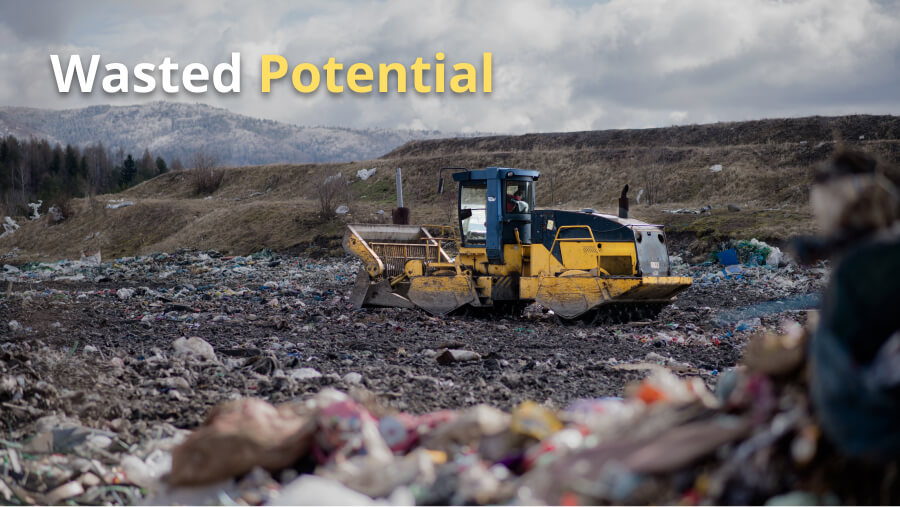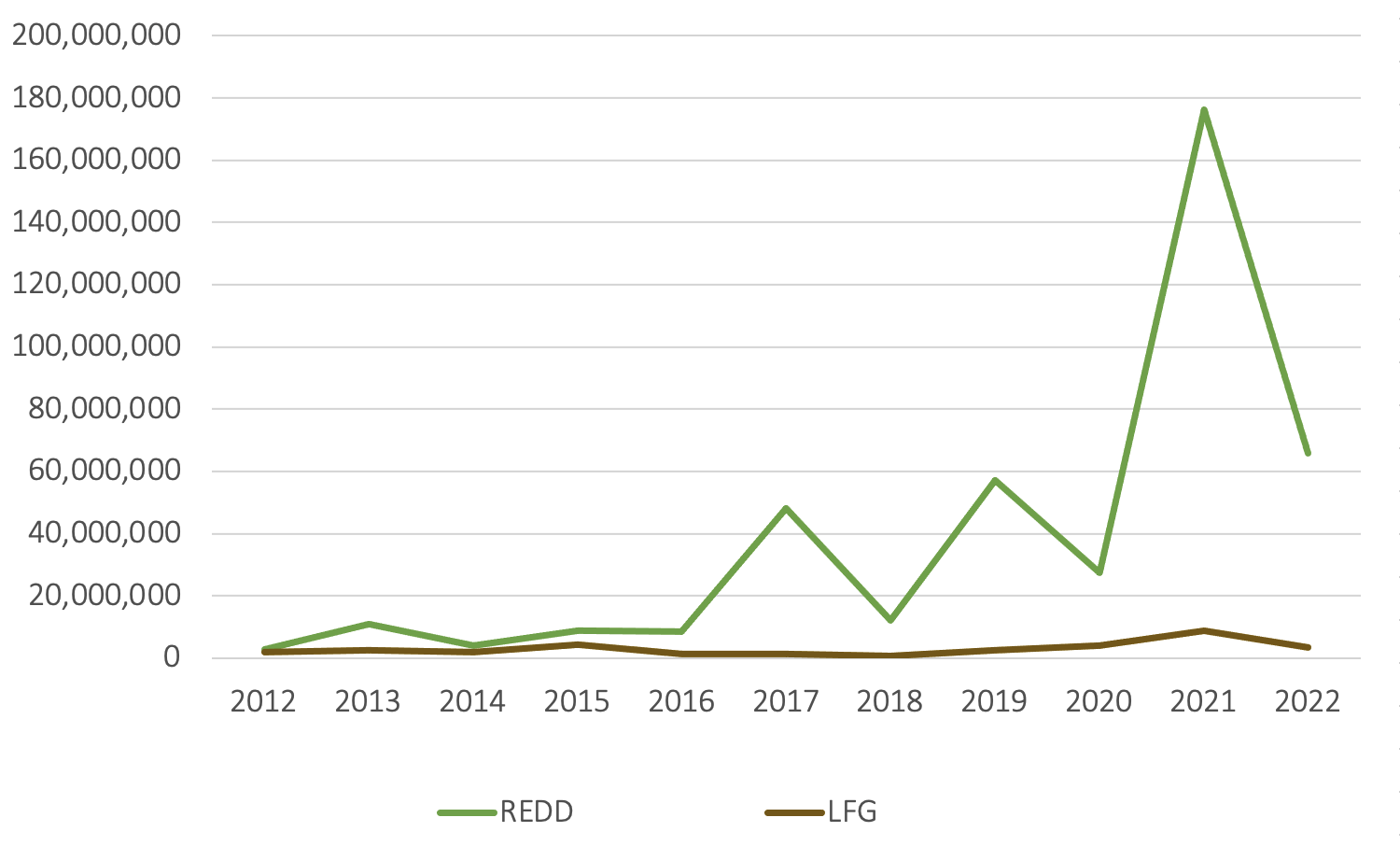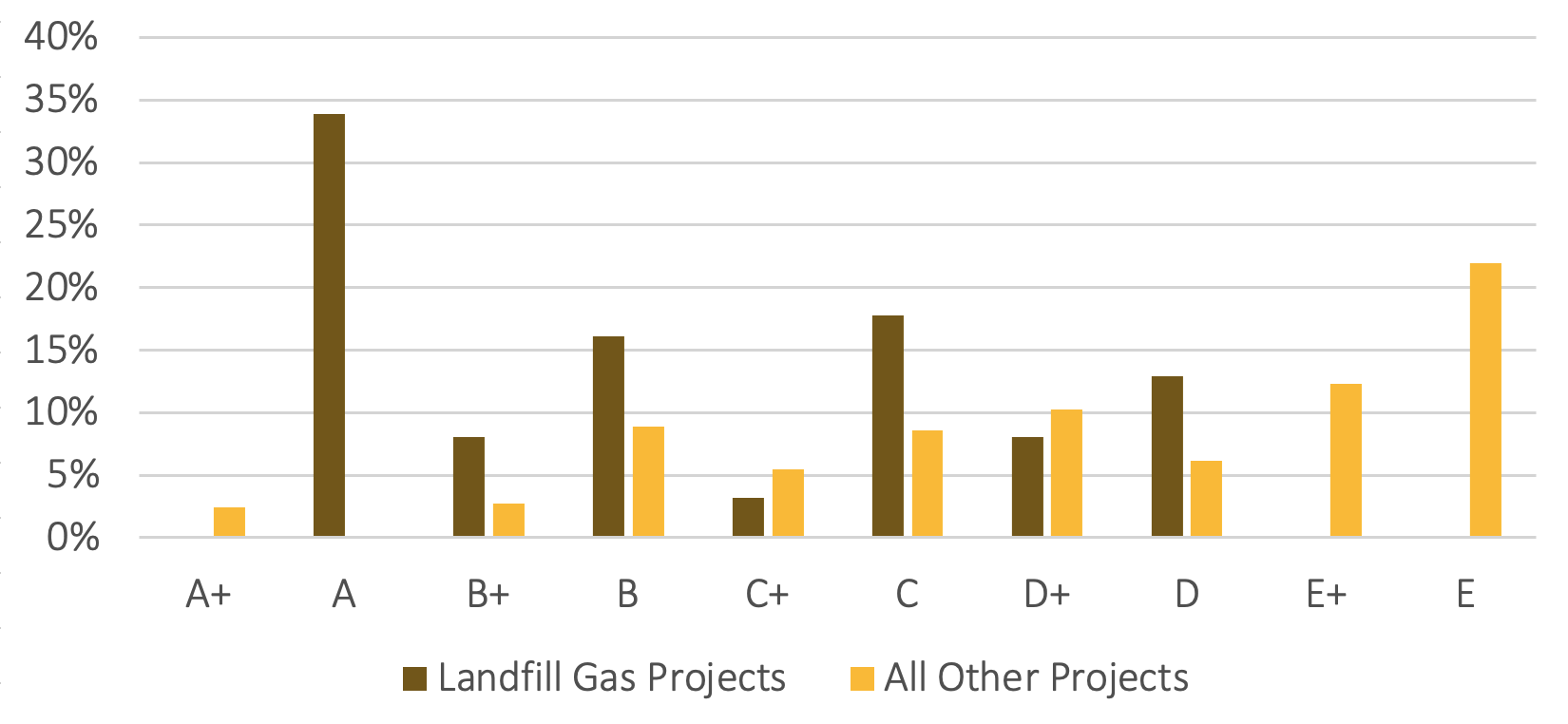
Imagine you’re looking to buy credits to offset your carbon footprint, or invest your money in helping our planet. Alongside one carbon project, you see a picture of a forest with hundreds of beautiful trees. Next to a different carbon project, you see a picture of metal tubes and thousands of pounds of rotting trash. Where would you choose to invest your money?
If you chose the forest, you’re not alone. Up until recently, REDD (Reducing Emissions from Deforestation and forest Degradation) projects were among the most popular credits in the voluntary carbon market. Credit issuances from REDD projects topped nearly 180 million tons in 2021. By contrast, credits from landfill gas (LFG) projects have not been nearly as popular.
Figure: Issuances of REDD versus LFG credits over the past 10 years
Source: Berkeley Voluntary Registry Offsets Database; the data is from four standards: ACR, CAR, Gold Standard and VCS.
Every year, the world generates around 2 billion tons of trash, most of which ends up in landfills. Landfill gas is created when organic material decomposes in the interior of a landfill, releasing greenhouse gases. It is made up of about 50% methane, 50% carbon dioxide, and a small amount of nitrogen. The high concentration of methane in LFG is of particular concern to global warming – this potent greenhouse gas produces 28 times the warming power of carbon dioxide over 100 years. In light of the scale and intensity of LFG’s warming effect, proper LFG management is crucial in the fight against climate change.
What is a landfill gas project?
LFG projects capture methane that would otherwise be emitted to the atmosphere. Most projects use the methane to produce electricity, heat or natural gas, while others flare the LFG without utilization. Projects that generate energy from the methane are normally able to displace fossil fuel usage which serves as another source of emissions reductions.
How do LFG projects fare in Calyx’s Ratings System?
Landfill gas projects can effectively reduce GHG emissions. To date, Calyx Global has rated 65 LFG projects. There is a wide distribution of ratings – some earning high GHG integrity scores, and others faring poorly. But overall, landfill gas performs better than many other project types we have rated thus far.Figure: Ratings for LFG Projects compared to all projects rated to date by Calyx Global

Why do LFG projects earn high GHG ratings from Calyx Global?
LFG projects are often additional, where the activities only take place because of carbon revenues. This is particularly true in countries where there are few or no methane regulations, or incentives to reduce landfill gas. There are only a few instances where additionality is less clear – for example, in developed countries with regulations, or where governments provide incentives through, e.g. feed-in-tariffs.While there may be issues with setting a baseline (and our ratings reflect an investigation on how well baseline emissions are estimated), measuring project emissions is straightforward. LFG projects also have low risks of leakage and overlapping claims, and no non-permanence risk.
In sum…
There is much “wasted potential” when LFG projects do not receive high interest from buyers and investors in carbon. While other project types may have charisma, landfill gas projects can have robust GHG integrity when it comes to carbon credit creation.We challenge companies to include a photo of a landfill into their next sustainability report. Because Trash Can Make a Difference (#trashcan).
Get the latest delivered to your inbox
Sign up to our newsletter for the Calyx News and Insights updates.
